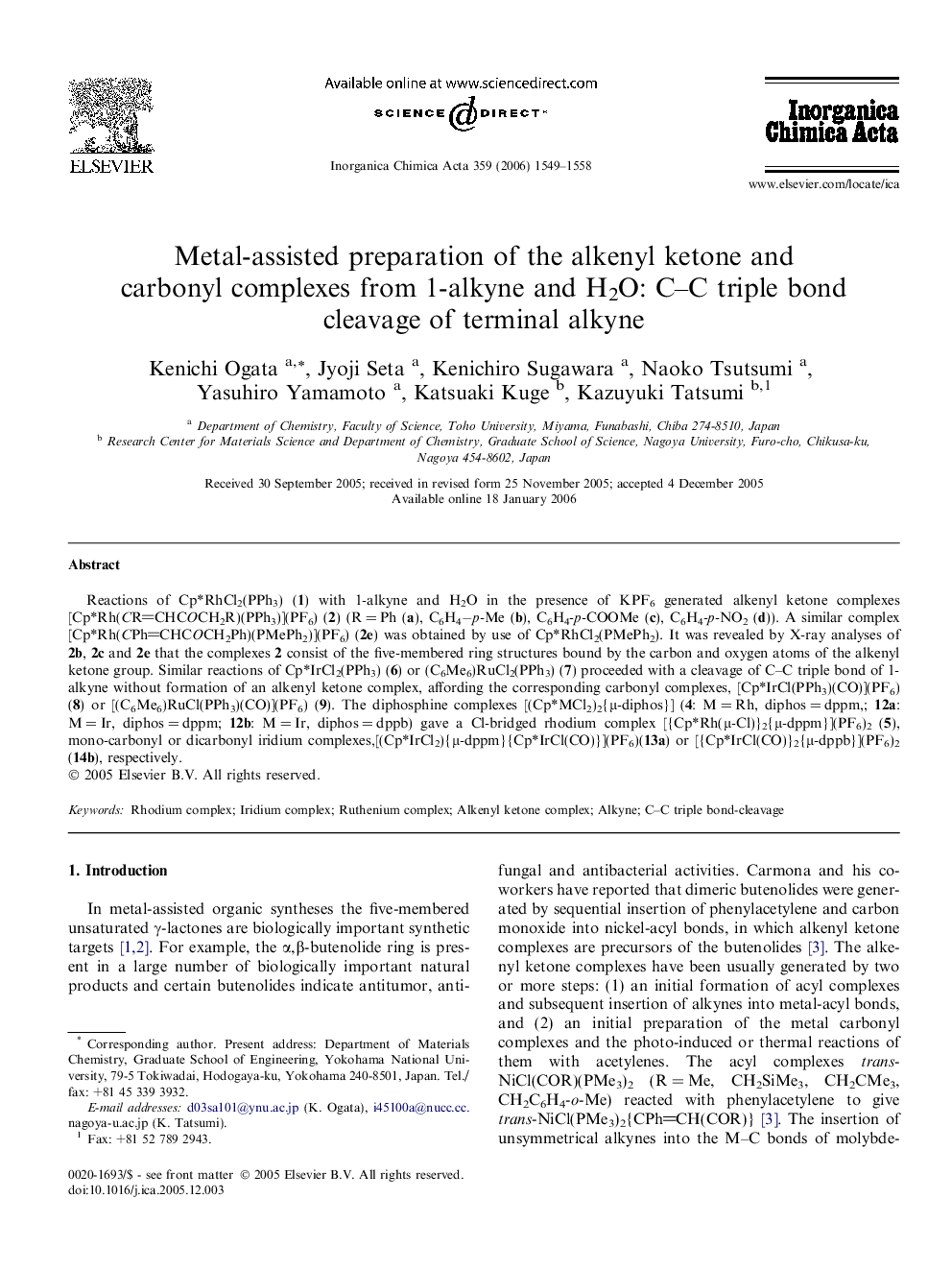| Article ID | Journal | Published Year | Pages | File Type |
|---|---|---|---|---|
| 1313093 | Inorganica Chimica Acta | 2006 | 10 Pages |
Reactions of Cp*RhCl2(PPh3) (1) with 1-alkyne and H2O in the presence of KPF6 generated alkenyl ketone complexes [Cp*Rh(CRCHCOCH2R)(PPh3)](PF6) (2) (R = Ph (a), C6H4−p-Me (b), C6H4-p-COOMe (c), C6H4-p-NO2 (d)). A similar complex [Cp*Rh(CPhCHCOCH2Ph)(PMePh2)](PF6) (2e) was obtained by use of Cp*RhCl2(PMePh2). It was revealed by X-ray analyses of 2b, 2c and 2e that the complexes 2 consist of the five-membered ring structures bound by the carbon and oxygen atoms of the alkenyl ketone group. Similar reactions of Cp*IrCl2(PPh3) (6) or (C6Me6)RuCl2(PPh3) (7) proceeded with a cleavage of C–C triple bond of 1-alkyne without formation of an alkenyl ketone complex, affording the corresponding carbonyl complexes, [Cp*IrCl(PPh3)(CO)](PF6) (8) or [(C6Me6)RuCl(PPh3)(CO)](PF6) (9). The diphosphine complexes [(Cp*MCl2)2{μ-diphos}] (4: M = Rh, diphos = dppm,; 12a: M = Ir, diphos = dppm; 12b: M = Ir, diphos = dppb) gave a Cl-bridged rhodium complex [{Cp*Rh(μ-Cl)}2{μ-dppm}](PF6)2 (5), mono-carbonyl or dicarbonyl iridium complexes,[(Cp*IrCl2){μ-dppm}{Cp*IrCl(CO)}](PF6)(13a) or [{Cp*IrCl(CO)}2{μ-dppb}](PF6)2 (14b), respectively.
Graphical abstractReactions of Cp*RhCl2(PPh3) (1) with 1-alkyne and H2O in the presence of KPF6 generated alkenyl ketone complexes [Cp*Rh(CRCHCOCH2R)(PPh3)](PF6) (2) (R = Ph (a), C6H4-p-Me (b), C6H4-p-COOMe (c), C6H4-p-NO2 (d)). Similar reactions of Cp*IrCl2(PPh3) (6) or (C6Me6)RuCl2(PPh3) (7) resulted in the formations of corresponding carbonyl complexes, [Cp*IrCl(PPh3)(CO)](PF6) (8) or [(C6Me6)RuCl(PPh3)(CO)](PF6) (9).Figure optionsDownload full-size imageDownload as PowerPoint slide
